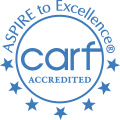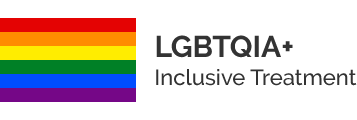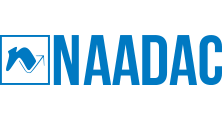Drug addiction can often times be hidden in plain sight, making it difficult to identify. Understanding and recognizing the signs, symptoms, risks and more is the first step in the recovery journey.
Understanding Drug Addiction
Learn about drug addiction
The term “substance abuse” refers to the misuse of legal or illicit drugs. The most commonly abused substances in the United States include alcohol, marijuana, and prescription painkillers that contain opioids. Cocaine, methamphetamine, heroin, and a variety of other drugs also contribute to the nation’s substance abuse problem.
Some people engage in substance abuse in an attempt to self-medicate. Others do so solely for recreational purposes. Regardless of the reason, substance abuse can expose you to immediate damage and long-term harm. The risks of substance abuse include physical and psychological distress, overdose, and the development of an addiction.
Statistics
Drug addiction statistics
The following statistics are from the 2016 National Survey on Drug Use and Health, which was conducted by the Substance Abuse and Mental Health Services Administration (SAMHSA):
- 28.6 million Americans age 12 and above, or 10.6% of the population, used an illicit drug in the past 30 days.
- About 20.1 million people age 12 and above met the diagnostic criteria for a substance use disorder (addiction) in 2016.
- About 25% of young adults ages 18-25 engaged in illicit drug use in the past month. This is the highest rate among all age groups.
- About 11.8 million people abused opioids in 2016. This includes approximately 11.5 million people who reported misusing prescription painkillers and 948,000 people who told researchers they had used heroin.
- 16.3 million Americans age 12 and above reported heavy alcohol use in the past month. SAMHSA defines heavy alcohol use as five or more episodes of binge drinking in a 30-day period.
Causes and Risk Factors
Causes and risk factors for drug addiction
A person’s risk for substance abuse and addiction can be influenced by a variety of factors, including the following:
- Having a parent or sibling who has struggled with addiction
- Family history of mental illness
- Personal history of trauma, mental illness, or prior substance abuse
- Personality characteristics such as impulsivity and novelty-seeking
- Associating with peers who abuse alcohol or other drugs
- Early exposure to substance abuse
Signs and Symptoms
Signs and symptoms of drug addiction
Symptoms of substance abuse can vary widely depending upon the type of drug or drugs that a person has been abusing. However, the following are common signs that you may have a substance abuse problem:
Behavioral symptoms:
- Being incapable of experiencing joy or coping with stress without using the substance
- Using the substance more frequently and in larger amounts
- Using the substance when it is clearly dangerous to do so, such as in combination with other substances or prior to driving
- Continuing to use the substance despite experiencing negative effects from prior use
- Trying but failing to stop using the substance
- Withdrawing from family and friends
Physical symptoms:
- Slurred speech
- Impaired coordination
- Dramatic increase or decrease in energy levels
- Altered sleep patterns (insomnia or hypersomnia)
- Changes in appetite
Mental symptoms:
- Confusion or disorientation
- Poor decision-making skills
- Inability to concentrate or focus
- Mood swings
- Anxiety, depression, or paranoia
- Loss of interest in friends, hobbies, or other significant issues
Effects
Effects of drug addiction
Depending upon what substance or substances you have been abusing, you may be at risk for a host of negative effects, including the following:
- Organ damage
- Physical injury due to behaviors while impaired
- Exposure to hepatitis C and HIV/AIDS
- Sexual dysfunction
- Strained or ruined relationships
- Family discord
- Substandard performance in school or at work
- Academic setbacks
- Job loss and unemployment
- Financial problems
- Arrest, incarceration, and other legal problems
- Onset or worsening of mental health disorders
- Withdrawal and isolation
- Pervasive sense of hopelessness and helplessness
- Suicidal thoughts and actions
Withdrawal Effects
Withdrawal effects of drug addiction
One of the many risks of substance abuse is that you can become addicted. When this occurs, your body will adapt to the presence of the drug. If you then try to stop using the substance without the help of professional treatment, you may experience a variety of painful withdrawal symptoms.
Withdrawal will vary depending upon which drug you have been abusing. The following are common withdrawal symptoms:
- Extreme cravings for the substance
- Excessive perspiration
- Nausea
- Vomiting
- Diarrhea
- Watery eyes and runny nose
- Abdominal cramping
- Muscle and bone pain
- Tics and tremors
- Insomnia
- Agitation
- Depression
Co-Occurring Disorders
Drug addiction and co-occurring disorders
People who struggle with substance abuse and addiction may also have an increased risk for certain co-occurring disorders, including the following:
- Anxiety disorders
- Bipolar disorder
- Depression
- Posttraumatic stress disorder (PTSD)
- Antisocial personality disorder
- Obsessive-compulsive personality disorder






